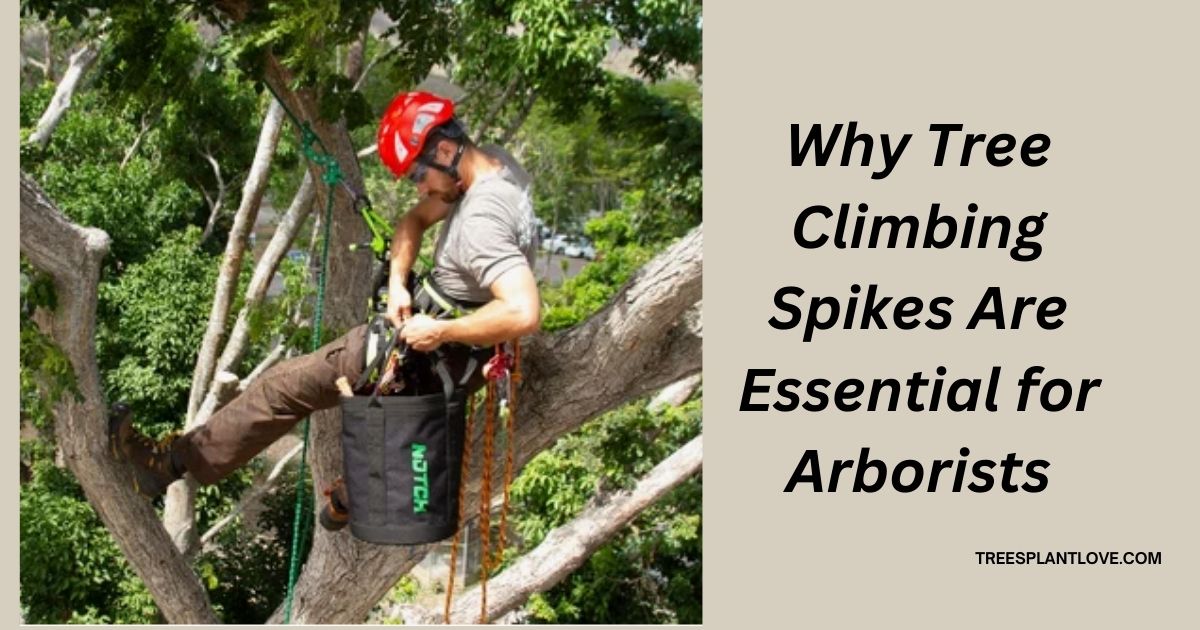
Why Tree Climbing Spikes Are Essential for Arborists: Enhancing Safety and Efficiency
Why Tree Climbing Spikes Are Essential for Arborists: Tree climbing spikes, also known as spurs or spikes, are an essential tool for professional arborists and tree care specialists. These specialized tools are designed to help climbers ascend trees safely and efficiently, allowing them to perform tasks like pruning, trimming, or removing trees.
While they may seem like simple pieces of equipment, tree climbing spikes serve a critical role in the arboriculture industry. In this article, we will explore why tree climbing spikes are important for arborists and how they contribute to the safety, productivity, and overall success of tree care operations.
Enhanced Stability and Safety
Tree climbing is a physically demanding and sometimes dangerous activity. Without the proper gear, climbers risk slipping or losing their footing on tree trunks, especially in challenging conditions. Tree climbing spikes provide much-needed stability by allowing the arborist to “dig” into the tree with their spiked footwear. This creates a secure foothold that drastically reduces the chances of slipping, enabling climbers to move confidently and safely as they work at height.
Safety is paramount in any tree climbing operation. Arborists face risks like falling branches, changing weather conditions, or the difficulty of navigating uneven or slippery bark. Tree climbing spikes act as a vital safeguard, ensuring climbers stay securely positioned during their work. This is particularly crucial when accessing high branches or performing tasks in areas where rope or harness systems may not provide enough support on their own.
Efficiency and Speed in Tree Climbing
Arborists often need to climb trees quickly, especially when handling emergency situations such as storm damage or hazardous tree limbs. Tree climbing spikes allow for a rapid and efficient ascent, helping climbers reach the necessary height without wasting time. The spikes grip the tree trunk, making each step more secure, and enabling climbers to move quickly and with minimal effort.
In situations where speed is of the essence, such as after a storm has caused tree damage, having the right equipment can make a significant difference in getting the job done effectively and safely. The added stability from tree climbing spikes means that climbers don’t have to expend unnecessary energy or take excessive precautions with every step, helping them focus on the task at hand.
Versatility Across Different Tree Species
Different tree species have varying bark textures, growth patterns, and branch structures. Tree climbing spikes are designed to work effectively on a wide range of tree species, making them an incredibly versatile tool for arborists. Whether climbing a smooth, thick-trunked oak or a more challenging species like a pine or eucalyptus, tree climbing spikes can be adjusted to provide the appropriate grip and support.
This adaptability is crucial for arborists who work in diverse environments. Whether they’re trimming branches on a small ornamental tree or removing large trees from a construction site, the ability to rely on tree climbing spikes ensures that the climber can perform tasks efficiently and with minimal risk, no matter the tree type or condition.
Ideal for Emergency Tree Removal and Pruning
Tree climbing spikes are particularly useful when performing emergency tree removal or pruning tasks. In situations where a tree has been damaged by a storm or has become unstable, spikes allow the arborist to quickly scale the tree to access broken branches or areas that need attention. The spikes help to anchor the climber securely to the tree trunk, enabling them to safely and efficiently handle limbs that may be dangling or dangerous.
Similarly, pruning trees often requires precise and careful access to specific branches. Climbing spikes give arborists the ability to climb to the right height and maintain stability while they prune or trim limbs. Without the aid of climbing spikes, reaching difficult or higher branches would be far more challenging and potentially unsafe.
Long-Term Durability and Cost-Effectiveness
Tree climbing spikes are built for durability. Made from high-quality materials such as stainless steel or aluminum, these spikes are designed to withstand the wear and tear of regular use. Their strength ensures that arborists can rely on them during frequent climbs, and their long-lasting nature reduces the need for frequent replacements. In the long run, investing in a sturdy pair of tree climbing spikes is a cost-effective solution for professionals.
By enhancing the safety and efficiency of tree climbing, these spikes help arborists complete their work more effectively, which can lead to improved productivity and fewer mistakes. For an arborist, time is money, and the right tools—like tree climbing spikes—ensure that tasks are completed efficiently and safely, ultimately boosting the bottom line.
Aiding in Advanced Arborist Techniques
Tree climbing spikes are also crucial for performing more advanced arborist techniques, such as tree rigging and tree assessment. When assessing the condition of a tree, an arborist may need to climb to a significant height or traverse difficult terrain to examine limbs and branches. Spikes make this process much safer, enabling the climber to position themselves at the most advantageous points.
For tree rigging, which involves securing ropes or equipment for branch removal or tree cutting, spikes provide stability and leverage when setting up the rigging systems. This advanced work requires a high level of precision, and the ability to securely climb and maneuver around the tree helps ensure the process goes smoothly and safely.
Conclusion
In summary, tree climbing spikes are indispensable tools for arborists, providing enhanced safety, stability, and efficiency when performing tree care tasks. Whether climbing to trim branches, perform emergency tree removal, or assess tree health, spikes offer arborists the ability to work confidently and quickly. Their versatility across different tree species, long-term durability, and cost-effectiveness make them a must-have in any arborist’s toolkit.
While tree climbing spikes offer significant benefits, it is important for climbers to always prioritize safety, using proper training, maintenance, and protective gear to minimize risk. With the right equipment and skills, arborists can safely navigate trees, protect their own well-being, and deliver high-quality tree care services to their clients.

Leave a Reply